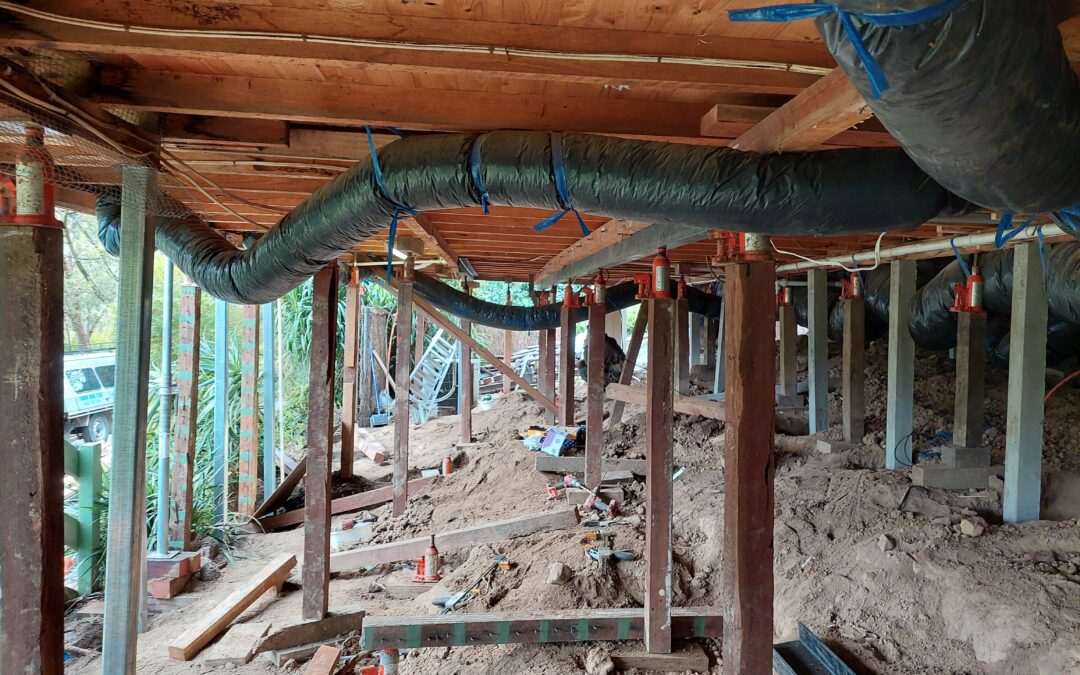As a homeowner, it’s crucial to stay vigilant about the condition of your house’s foundation and structural integrity. One common issue that can arise over time is the need for restumping, also known as reblocking. Restumping involves replacing the deteriorating or faulty stumps that support your house, ensuring its stability and longevity. In this blog post, we will discuss the signs that may indicate your house needs restumping and the importance of seeking professional advice.
Uneven or Sloping Floors:
One of the most apparent signs that your house may require restumping is the presence of uneven or sloping floors. If you notice that certain areas of your floors feel lower or higher than others or that objects tend to roll in a particular direction, it’s a strong indication of foundation issues. Uneven floors are usually a result of deteriorating or shifting stumps, which can compromise the stability of your home.
Cracks in Walls or Ceilings:
Cracks in walls and ceilings can be a telltale sign of foundation problems. While small cracks are relatively common due to natural settling, it’s important to pay attention to new or widening cracks. Cracks that appear around door frames, window sills, or corners can indicate structural movement caused by compromised stumps. If left unaddressed, these issues can worsen over time, potentially leading to more significant structural damage.
Sticking Doors or Windows:
Difficulty in opening or closing doors and windows is another red flag that your house may require restumping. If you find yourself having to exert extra force or if they tend to get stuck, it could be due to an uneven foundation. As the stumps lose their integrity, the weight distribution of your house can shift, affecting the alignment of doors and windows. Ignoring this issue may result in further damage to the frames and fittings.
Bouncing or Squeaking Floors:
Have you noticed certain areas of your floors bouncing or squeaking when you walk on them? These signs can indicate inadequate support from the stumps beneath your house. As the stumps deteriorate, they may lose their ability to provide stability and absorb the weight load. If your floors feel bouncy or produce squeaking sounds, it’s time to investigate the condition of the stumps.
Visible Damage to Stumps:
Regularly inspecting the stumps supporting your house is a proactive measure to catch any potential issues early on. Look for signs of damage such as rot, termite infestation, or cracks in the stumps themselves. If you notice any of these problems, it’s crucial to seek professional advice. Damaged stumps cannot effectively support your house, compromising its structural integrity and safety.
If you would like to find out the potential costs of restumping your home, head over to our blog post Restumping Cost in Melbourne
The stability of your house depends on the strength and condition of its foundation. Identifying signs of potential restumping needs is essential for maintaining a secure and durable home. If you observe uneven or sloping floors, cracks in walls or ceilings, sticking doors or windows, bouncing or squeaking floors, or visible damage to the stumps, it’s advisable to consult a qualified building inspector or structural engineer. These professionals can assess the situation, determine if restumping is necessary, and recommend appropriate solutions to protect your home for years to come. Remember, addressing foundation issues promptly can save you from costly repairs in the future and ensure the safety and comfort of your household..
If you need help assessing the structural integrity of your home, we are here to help. Contact our friendly team today and receive clear and concise advise. We can also provide you with a free assessment and a quote of the works required (if any) which will start you on your journey to having a strong house foundation.
Send Eric an email! eric@empirefoundations.com.au

